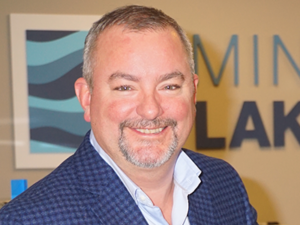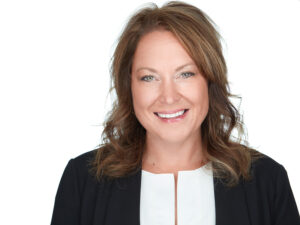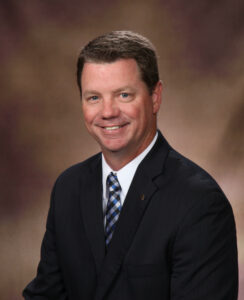Minnesota banker Noah Wilcox has never seen this tight of a labor market in his nearly 30-year career.
Wilcox, president and CEO of northern Minnesota-based Grand Rapids State Bank and chair and CEO of Delano-based Minnesota Lakes Bank, said the shortage of workers stretches from tellers to the C-suite.

Though compensation has not usually been a barrier to attracting staff, hourly pay is now a major sticking point. Wilcox’s banks have raised starting wages several times in the last year as local fast food restaurants and other retailers are paying workers with no experience $18 to $20 per hour. Prospective workers are now willing to accept a less glamorous position for only slightly more pay as inflation continues to limit their spending power. “It’s an hourly base rate war,” Wilcox added.
The battle for employees stretches even beyond base pay. Nearly every applicant who applies to Wilcox’s banks now expects to have a hybrid/remote work option, after the pandemic changed the working preferences of employees — potentially permanently. “The genie’s out of the bottle,” Wilcox added.
Wilcox’s sentiments reflect the prevailing view that offering competitive wages and flexibility paired with a positive culture are crucial to attracting workers as unemployment remains under 4 percent.
Raising the floor
Take Saint Louis Park, Minn.-based Bridgewater Bank. In 2021, the $4.5 billion bank became the first in the Twin Cities market to raise minimum starting wages to $20 an hour for all regular, full-time workers. The increase came after Bridgewater’s executive team strategized how to differentiate the bank through its offerings and other amenities in the competitive environment while keeping entry-level employees.
Today, the bank has started to refill key roles and is seeing fewer employees leave. In 2022, the number of FTE employees increased 12 percent, to a total of 246. Senior Vice President of Human Resources Jennifer Gadient said the base pay raise attracted employees who might not have otherwise considered banking.
Gadient attributes Bridgewater’s success in retaining employees to its positive culture. Bank leaders and staff meet on a quarterly basis to review accomplishments and areas for improvement, ensuring that they work toward objectives. The bank partners with Salt Lake City-based coaching company Franklin Covey to provide leadership development for managers at all levels. Though Bridgewater allows most employees a hybrid work option, many still come in every day.

“People are far more cautious about making some movements right now,” Gadient noted. “We’ve really been able to weather a lot of that, and I think it really is attributed to our culture, our benefits, to the types of opportunities we offer our team members when they join the organization. So not just from the initial onset of what role they might be in, but they also see that there are opportunities for growth and development along the way.”
Both Grand Rapids State Bank and Minnesota Lakes Bank have reevaluated their hiring processes to find workers who align with their vision and cultures. “If you can hire right, you are miles ahead in retention already,” Wilcox noted. He doesn’t see the ongoing tightness in the labor market as a long-term threat to his banks’ operations.
“We will always find a way,” he added.
The challenges banks face in attracting talent come as more than 40 percent of workers look for a higher-paying job, while a slightly smaller percentage seeks a secondary gig, according to a Federal Reserve Bank of Minneapolis survey of nearly 500 mainly rural respondents. The U.S. labor force participation rate has fallen to 62.6 percent from more than 66 percent 15 years ago.
The labor force participation rate has fallen nearly 2.5 percent just this year, noted United Bankers’ Bank Vice President of Risk Management James Nowak.
Shrinking applicant pools
At Mason City, Iowa-based First Citizens Bank, dozens of applications were received for every teller opening in 2011. Now, the bank is fortunate to have 10, said Chief HR Officer Dan McGuire. To account for the worker shortage, the $1.6 billion bank advertises for open positions on social media and offers financial incentives for employees to recruit staff. “We’ve had to tell our story a bit more,” McGuire added.

Whereas First Citizens used to institute firm end dates for job listings, the bank is now more willing to search longer to find the right staff. First Citizens has revised its remote work policy to allow staff to work in either a hybrid model or fully remote model, and offered higher raises. Though more employees still choose to work in an office than from home, the option allows the bank to retain staff who moved but still want to work remotely.
Though First Citizens Bank used to prioritize finding experienced staff, the bank now also looks for employees who are coachable. The bank is more willing to train staff than it once was. In one department, an experienced staff member is now training employees on policies and procedures. In another instance, First Citizens recently brought on summer interns while vetting whether they would be a good long-term fit.
Bank tellers in rural communities have been the hardest positions to fill at West Des Moines-based BANK, noted CEO Chris Grimm. Commercial lenders have also been hard to find as demand continues to outpace supply.
Grimm said employees are more willing to leave for other companies in urban markets. To account for that, BANK representatives attend job fairs and work with local colleges and universities to attract summer interns whom the bank can potentially hire on a full-time basis upon graduation.
Forreston, Ill.-based Solutions Bank President and CEO Betsy Johnson said more job applicants are demanding flex hours and remote work. The $454 million bank has raised wages and cut down on branch staffing both in terms of the number of employees and hours. The bank’s IT department is remote along with most operations work.
There are no more transaction-focused positions at Solutions Bank. Instead, the bank has adopted a universal banker model and finds employees who are coachable and fit the bank’s culture. “I can teach them banking but I can’t teach them common sense,” Johnson said.
Jockeying for talent
The onset of work-from-home comes as technology and compliance positions become more in-demand amid the rise in digital banking. Commercial lenders are also proving hard to find in the current interest rate environment as banks prioritize establishing a strong deposit base or deposit portfolio to rely on until rates stabilize.
Community banks must offer potential employees more flexibility than super-regionals, including possibly allowing for remote work on Mondays or Fridays, said Stu Kazor of Omaha, Neb.-based financial recruiting firm Adams, Inc. Banks that require employees to come in every day should either offer sign-on bonuses or a company car for sales staff, Kazor added.
“It’s definitely very competitive, that’s for sure,” he said of the hiring environment for community banks. “They’ve got to get more creative to get better talent.”
There are more open jobs than qualified candidates, said Harlow Whiting, a partner at Granville, Ohio-based bank recruiting firm York & Associates. “Either way, the problem is always there, just trying to find the right person for the job,” he added.
More banks — especially those in rural areas — are trying to get employees to return to the office, Whiting noted. Community banks must provide non-customer-facing employees with a flexible work environment to attract workers who live in other markets and are already being recruited by larger banks and credit unions. For banks that don’t offer employees remote work, Whiting suggested raising compensation or paying a portion of their transportation expenses.
RSM Senior Analyst Brandon Koeser sees the labor market as especially tight in specialized areas like regulatory compliance and IT as regulatory scrutiny continues to grow following the string of bank failures earlier this year. Though many banks are hiring only to meet their current needs, Koeser said banks must also consider their needs in two to three years, especially as more senior staff are nearing retirement age.
According to the Minneapolis Fed survey, a majority of workers said the jobs they were interested in didn’t pay enough, with smaller percentages reporting being required to obtain new credentials or certifications or having strenuous job schedules. The highest share of respondents who were looking to change jobs were motivated by opportunities for career growth, followed by the need to feel appreciated, to reduce burnout from staff shortages and increase household income.
Accounting firm CLA advises employers to review their paid time-off plans, as more employees consider work-life balance to be a major consideration. According to the company, employers must also understand the labor market and look for market analyses to evaluate whether their benefits are competitive.
